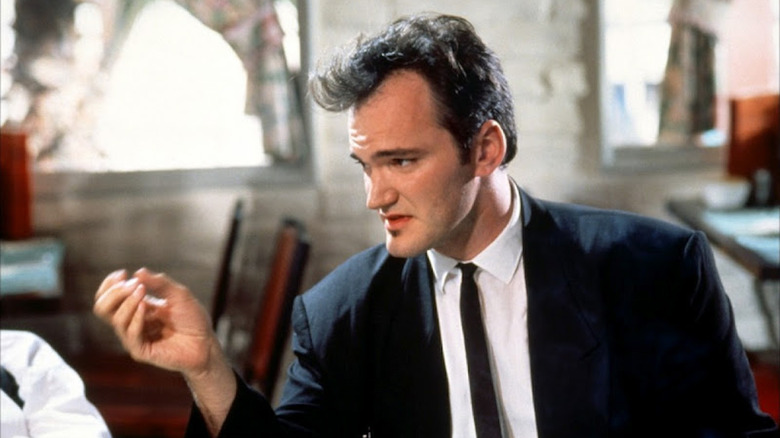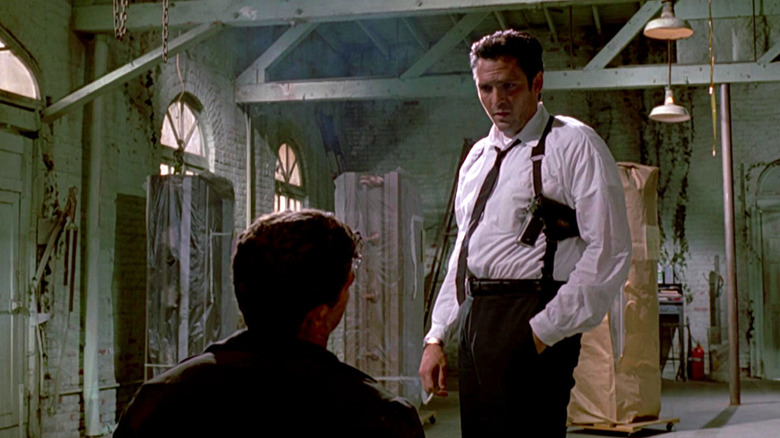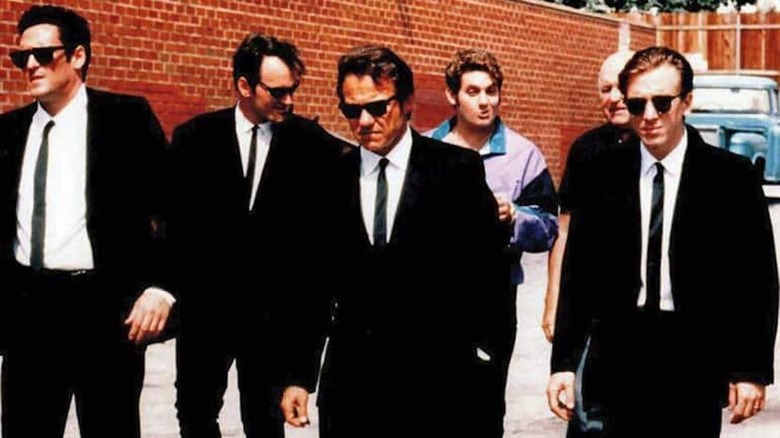Quentin Tarantino Started Writing Reservoir Dogs And Pulp Fiction With The Same Idea In Mind
28 years ago, it was hard to get a handle on exactly what Quentin Tarantino was up to with his first two movies.
I was a freshman in college when "Reservoir Dogs" wended its way through art houses and campus theaters across the United States, and, in the mostly pre-internet era of the early '90s, it was rare to see a movie acquire a devoted cult following so rapidly sans home video release. Though Tarantino wasn't the first screenwriter of the video store generation to sprinkle pop culture references throughout his dialogue (Shane Black and Daniel Waters beat him to that particular punch), his bracingly meta take on the gangster movie was the most exciting thing to happen to the genre since Jean-Luc Godard's "Breathless."
Gen X Cinephiles were still gorging themselves on "Reservoir Dogs" rewatches when "Pulp Fiction" hit theaters with a seismic impact equal to that of Dennis Hopper's "Easy Rider" in 1968. Harvey and Bob Weinstein's Miramax Films wasn't in the habit of going wide with their indie releases, but they knew Tarantino's sophomore effort was special. Tarantino doubled down on everything that made his first film unique. He hurled cultural references both familiar and obscure at audiences, while toying with his narrative's chronology in such a dizzying manner that it was difficult to get the timeline straight on one's initial viewing.
It was around this time that an emboldened Tarantino began holding forth about, well, whatever was on his mind via a seemingly never-ending string of interviews. Tarantino was remarkably brash for a newcomer (and given to tangents), but when he discussed his creative process and approach to storytelling, he was incredibly specific. Even though he only had two movies under his belt as a director, he knew exactly what he was doing.
Hardened criminals trapped in a meta movie
In a 1994 interview with Film Comment's Gavin Smith, Tarantino elaborated on the mix of realism and "movie-movie" artifice of his first two films. "I like movies that mix things up," he said. "Half the audience is tittering, [and] the other half is diving under the seat." He then explained his formula thusly:
"The starting point is, you get these genre characters in these genre situations that you've seen before in other movies, but then all of a sudden out of nowhere they're plunged into real-life rules. For instance, in 'Reservoir Dogs' the fact that the whole movie takes place in real time: what would normally be a ten-minute scene in any other heist movie ever made—all right, we're making the whole movie about it. That's not ten minutes, it's an hour. The movie takes place in the course of an hour."
"Reservoir Dogs" is obviously longer than an hour (though many of its B-movie forebears didn't run much longer than that), which is due to the flashbacks that flesh out the backstories of Mr. Orange (Tim Roth) and Mr. Blonde (Michael Madsen). As Tarantino told Smith, the characters are bound to a real-time clock, while the audience is on a movie clock.
The good and bad legacy of Quentin Tarantino
Implementing a flashback structure was hardly innovative 30 years ago, but the stark difference between the life-and-death intensity of the thieves' real-time predicament and the hang-in-the-cut casualness of movie time had rarely been felt so acutely in an American movie. This refreshing twist quickly turned stale, as Tarantino imitators flooded the independent film market with too-cool-for-school crime flicks yearning to look and sound like the master's originals. Suffice to say, there were a lot of really lousy movies jockeying for art-house screens throughout the 1990s.
Tarantino's genre blender audaciousness and narrative trickery did eventually inspire some phenomenally talented filmmakers. We probably wouldn't have Edgar Wright's "Shaun of the Dead," Rian Johnson's "Brick" or Christopher Nolan's "Memento" without him. And, oh, what a loss to cinema that would be.


